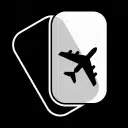Analyzing the Major Differences Between the Turboprop and the Light Jet Aircraft
Here at Stratos Jet Charters, we often receive charter requests for light jets when the flight can easily be accomplished by a turboprop at a more cost-effective price. Oftentimes, private jet travelers are unfamiliar with the advantages (and disadvantages) of a turboprop jet charter. Other times, jet charter travelers are simply under the false impression that turboprops are less luxurious than light jet aircraft. We, at Stratos Jet Charters, would like to take this opportunity to explain the key differences between the turboprop and the light jet so that you can make an informed decision for your next flight. Although turboprops are not typically considered private jet aircraft, they still fall in the private jet category because they are powered by a turbine engine. In reality, a turboprop aircraft is more like a cross between a piston prop airplane and a turbine engine jet. In turboprop engines, a gas turbine uses gas power to drive a propeller and produce thrust (one of four reaction forces needed for flight), rather than relying on jet exhaust like turbofan engine aircraft. Turboprop aircraft were specifically designed to be the most efficient at low altitudes and slower speeds under 450 mph. When turboprops are flown at the correct altitude and airspeed, they are extremely efficient and burn less fuel than most light jets, which in turn lowers the hourly rate of the aircraft. This makes the turboprop jet charter a cost-effective and attractive solution for same-day round trip charter flights under 500 nautical miles each way. For example, a turboprop would be the most cost-effective solution for a charter flight from Miami to Nassau. Another major advantage of turboprops for charter flights is that they have excellent short-field take off and landing capabilities. Most turboprop aircraft have much shorter takeoff and landing distances than light jets, which means they have access to smaller, regional airports with shorter runways. The average light or mid-sized jet requires at least 5,000 feet of runway to safely takeoff and land, while some turboprops can safely take off and land with as little as 3,000 feet of runway length. This grants turboprops access to some of the country’s hardest-to reach airports. Although the turboprop is an efficient aircraft for short distance flights, it is not the most efficient and cost-effective aircraft for long-distance or high-speed charter flights. In fact, everything the turboprop stands for – performance, short-field takeoff, and fuel efficiency – goes right out the window when the aircraft nears supersonic speeds. And since turboprops cruise at slower airspeeds, they do not have the same range capabilities of light jets. If you need to travel a greater distance or get to your destination quickly, a light or mid-sized category aircraft would be a better choice for your flight. Another disadvantage of the turboprop aircraft is that they typically can’t climb higher than 30,000 feet. As we’ve mentioned in past articles, altitude can play a significant role in the quality of your air charter experience. It may seem trivial, but the flight level of your aircraft can actually affect the amount of turbulence and inclement weather conditions you may encounter during your flight. If you would prefer to avoid “bumpy” airspace, a mid-size aircraft would be the most appropriate aircraft for your flight. As far as luxury goes, turboprop cabins are just as luxurious and as comfortable as most light jets. In fact, there are several turboprop aircraft in our approved aircraft network that are considered among the safest and most luxurious aircraft in the world. If you need further proof, just ask your Stratos Jets private flight advisor to provide interior photos of turboprop aircraft. Whether you choose to charter a turboprop or light jet for your next flight, always remember to work with your Stratos Jets private flight advisor to find the most appropriate aircraft that can meet the specific needs of your flight.
Empty Leg Flights
- Mid
- Hawker 900XP
FRG (FARMINGDALE)
FRG Airport
PBI (WEST PALM BEACH)
PBI Airport
- Mid
- Lear 60
VNY (VAN NUYS)
VNY Airport
TRM (PALM SPRINGS)
TRM Airport
- Super-Mid
- Citation X
VNY (VAN NUYS)
VNY Airport
PSP (PALM SPRINGS)
PSP Airport
- Heavy
- Gulfstream GIV
VNY (VAN NUYS)
VNY Airport
SAN (SAN DIEGO)
SAN Airport
- Mid
- Lear 60
JAX (JACKSONVILLE)
JAX Airport
MCO (ORLANDO)
MCO Airport
Are you ready to book your New York and Seattle charter flight yet?
Our friendly, expert air charter agents are here to answer questions or start your quote today. Don`t wait, call now and we'll get you on your way to your destination!
Call 888-593-9066










